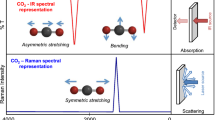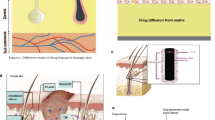Abstract
The high impedance of glass micropipettes is widely recognized and appropriate attention is given to the amplifier input impedance required to reproduce bioelectric events recorded with these electrodes. However, similar precautions are often ignored when using metal microelectrodes, because it is often assumed that their impedance is much lower than micropipettes of comparable size. This paper reports on studies of the relationship between metal microelectrode area and amplifier input impedance required to record faithfully the action potential of frog skeletal muscle. The distortion of the EMG, as the amplifier input impedance was intentionally lowered in discrete steps, is quantitated in terms of the resultant per cent tilt of a square wave inserted along with the action potential. In addition, the impedance vs. frequency relationship is plotted for two metal microelectrodes of 100 and 1600 μ2 in area. This relationship shows the increased impedance at lower frequencies resulting from the capacitance produced by the electrical double layer. Results show that the minimum input impedance required for proper EMG recording ranges from 88 MΩ for steel electrodes of 500 μ2 in area to 1 megohm for electrodes of 125,000 μ2.
Sommaire
Lorsqu’il est nécessaire de connaître la nature fondamentale d’un phénomène d’origine bioélectrique, on fait appel généralement à une microélectrode connectée à un amplificateur à haute impédance d’entrée. Les micropipettes en verre sont employées aussi bien que les microélectrodes métalliques. Bien que des précautions spéciales soient respectées pour l’usage des micropipettes, on fait d’ordinaire moins attention à l’impédance d’entrée des amplificateurs lors de l’emploi des microélectrodes métalliques, partant du principe que l’impédance de celles-ci est beaucoup plus faible que celle des micropipettes de taille comparable. Ce principle conduit à conclure que la plupart des amplificateurs d’enregistrement des phénomènes bioélectriques peuvent être utilisés en liaison avec des microélectrodes métalliques. Le but de cet article est de montrer l’influence de la surface des microélectrodes métalliques sur la distorsion du signal, enregistré à l’aide d’un amplificateur à impédance résistive commutable. On verra également qu’il existe une relation entre l’aire de la microélectrode et l’impédance d’entrée pour differents taux de distorsion. Dans un article antérieur (Geddes et Baker, 1966) on présentait une telle relation à l’occasion d’enregistrement d’électrocardiogrammes avec de petites électrodes. L’étude présente tendant à préciser cette relation a été faite à partir de l’électomyogramme du gastroenémius de grenouille.
Zusammenfassung
Sollen die grundsätzlichen Eigenschaften eines bioelektrischen Vorgangs untersucht werden, benutzt man gewöhnlich eine Mikroelektrode, die mit einem Verstärker von sehr hoher Eingangsimpedanz verbunden ist. Glasmikropipetten und Metallmikroelektroden werden zu diesem Zweck routinemäßig eingesetzt. Obwohl beim Gebrauch von Mikropipetten besondere Vorsichtsmaßnahmen getroffen werden, wird beim Gebrauch von Metallmikroelektroden der Verstärkeriengangsimpedanz weniger Beachtung geschenkt. Es wird nämlich angenommen, daß die Impedanz der Metallelektroden beträchtlich unter der von Mikropipetten ähnlicher Größe liegt. Diese Annahme führt oft zu dem Schluß, daß die meisten Verstärker für die Registrierung bioelektrischer Vorgänge mit Metallmikroelektroden betrieben werden können. Es ist Zweck dieser Arbeit, den Verzerrungstyp einer bioelektrischen Registrierung zu demonstrieren, welcher beim Gebrauch von Metallmikroeletroden verschiedener Flächen auftritt, wenn der Verstärkereingang eine auswählbare resistive Eingangsimpedanz hat. Es wird auch gezeigt, daß eine Beziehung zwischen Elektrodenfläche und Eingangsimpedanz für bestimmte Verzerrungsgrade besteht. In einer vorangegangenen Arbeit (Geddes und Baker, 1966) wurde gezeigt, daß eine solche Beziehung bei der Aufnahme des Elektrokardiogramms mit kleinen Elektroden besteht. In der hier mitgeteilten Untersuching wurde das Elektromyogramm vom Froschgastrocnemius als bioelektrischer Vorgang für die Untersuchung der Beziehung zwischen Eingangsimpedanz und Elektrodenfläche herangezogen.
Similar content being viewed by others
References
Barnett, A. (1937) The basic factors involved in proposed electrical methods for measuring thyroid function.Wst. J. Surg. Obstet. Gynec. 45, 540–554.
Basmajian, J. V., Forrest, W. J. andShine, G. (1966) A simple connector for fine wire EMG electrodes.J. appl. Physiol. 21, 1680.
Burns, R. C. (1950) Study of skin impedance.Electronics 23, 190.
Cooper, R. (1963) Electrodes.Am. Jl. EEG. Techn. 3, 91–101.
Einthoven, W. (1928) Die Aktionsstrome des Herzens.Handbuch der Normalen und Pathologischen Physiologie, Springer, Berlin, Part 2, pp. 785–862.
Geddes, L. A. andBaker, L. E. (1966) The relationship between input impedance and electrode area in recording the ECG.Med. biol. Engng 4, 439–450.
Geddes, L. A. andBaker, L. E. (1967) Chlorided silver electrodes.Med. Res. Engng (In press).
Gesteland, R. C., Howland, B., Lettvin, J. Y. andPitts, W. H. (1959) Comments on microelectrodes.Proc. IRE.47, 1856–1862.
Gildemeister, N. (1919) Über elektrischen Wederstand Kapazität und Polarisation der Haut.Pflügers. Arch. ges. Physiol. 176, 84–105.
Grahame, D. (1952) Mathematical theory of the faradic admittance.J Electrochem. Soc. 99, 370-C–385-C.
Gray, J. A. B. andSvaetichin, G. (1951–52) Electrical properties of platinum tipped microelectrodes.Acta. Physiol. Scand. 24, 278–284.
Grundfest, H., Sengstaken, R. W., Oettinger, W. H. andCurry, R. W. (1950) Stainless steel micro-needle electrodes made by electro-pointing.Rev. Scient. Instrum. 21, 350–360.
Hubel, D. (1957) Tungsten microelectrode for recording from single units.Science 125, 549–550.
Lewis, T. (1914–15) Polarisable as against non-polarisable electrodes.J. Physiol. 49, L-Lii.
Offner, F. F. (1942) Electrical properties of tissues in shock therapy.Proc. Soc. exp. Biol. Med. 49, 571–575.
Pardee, H. E. B. (1917) Concerning the electrodes used in electrocardiography.Am. J. Physiol. 44, 80–83.
Plutchik, R. andHirsch, H. R. (1963) Skin impedance and phase angle as a function of frequency and current.Science 141, 927–928.
Schwan, H. P. (1963) Determination of biological impedances.Physical Techniques in Biological Research, Vol. VIB, (Edited byW. L. Nastuk) Academic Press, New York.
Schwan, H. P. (1965) Electrode polarization impedance: limits of linearity.Proc. 18th Ann. Conf. Eng. Med. Biol., p. 24, MacGregor & Werner, Washington, D.C.
Schwan, H. P. (1965) Electrode polarization in AC steady state impedance studies of biological systems.Digest 6th Int. Conf. Med. Elect. Biol. Eng., Tokyo. Okumura, Tokyo.
Tasaki, I. (1952–53) Properties of myelinated fibers in frog sciatic nerve and in spinal cord as examined with microelectrodes.Jap. J. Physiol. 3, 73–94.
Terman, F. E. (1943)Radio Engineers’ Handbook, p. 969. McGraw-Hill, New York.
Weinman, J. andMahler, J. (1964) An analysis of electrical properties of metal electrodes.Med. Elect. Biol. Engng 2, 299–310.
Author information
Authors and Affiliations
Additional information
Supported by Grant USPH 5 T1-HE 05125.10, National Heart Institute, National Institutes of Health, Washington, D.C.
Rights and permissions
About this article
Cite this article
Geddes, L.A., Baker, L.E. & McGoodwin, M. The relationship between electrode area and amplifier input impedance in recording muscle action potentials. Med. & biol. Engng. 5, 561–569 (1967). https://doi.org/10.1007/BF02474249
Received:
Issue Date:
DOI: https://doi.org/10.1007/BF02474249




